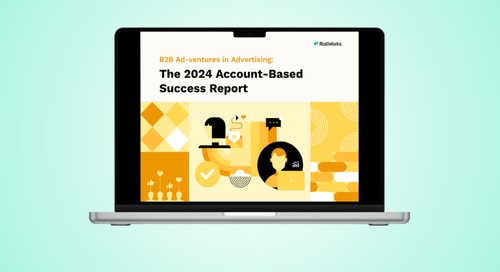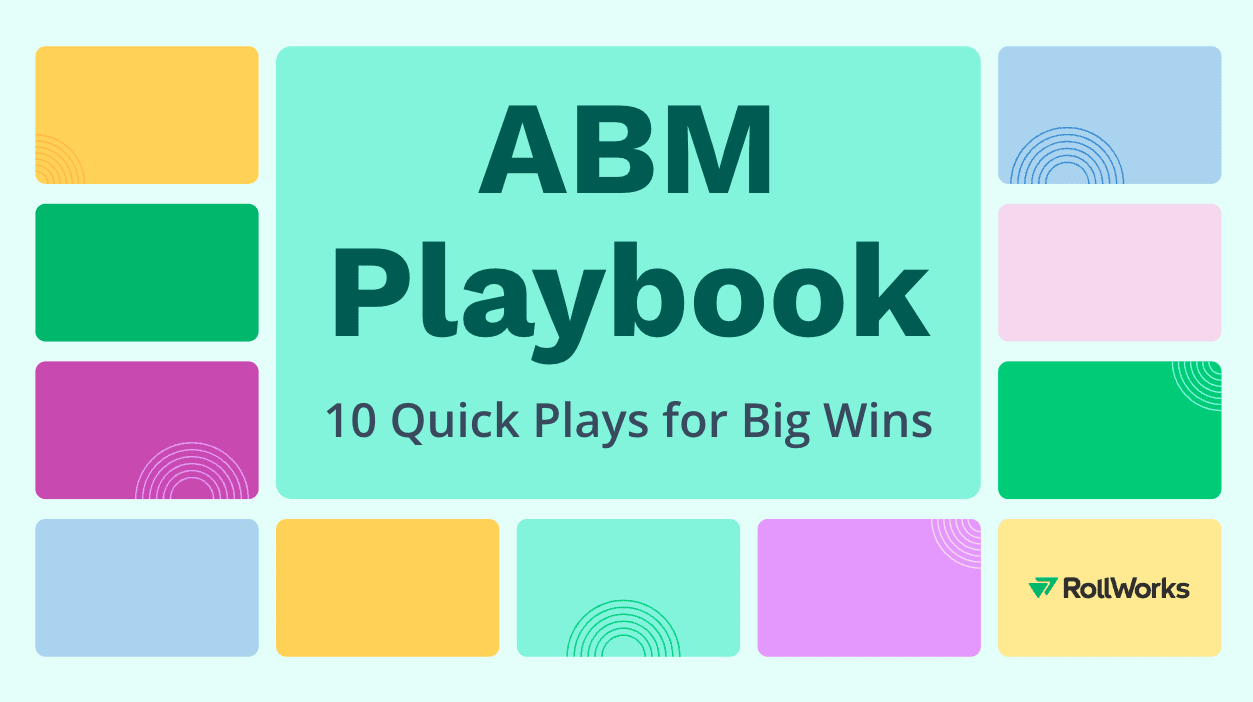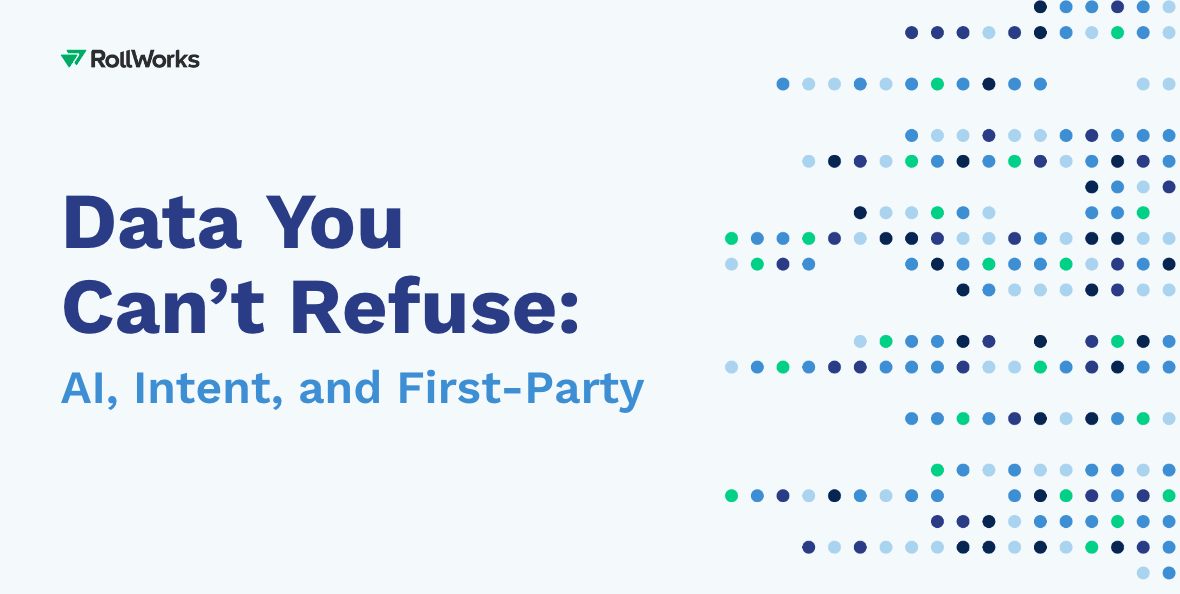You’ve read all the ebooks, pored over every blog post, spent months researching account-based marketing (ABM), and now you’re ready to roll out an ABM program. Except that no one seems to get what the big deal is, your managers are wringing their hands about budgets, and you’re already at max headcount. You have a plan, you just need to climb over some obstacles before you can execute it.
As marketing grows and evolves, it’s understandable that marketers will want to get their hands dirty with the latest and greatest. But it’s also important to remember that not everyone shares your enthusiasm. The truth is marketing can be a fad-driven industry, and it’s understandable that some people might approach the latest and greatest with a healthy dose of scepticism.
If you’re running up against some objections, this just means it’s time to put the marketing hat away and put the sales hat on. Luckily, we’ve heard pretty much every argument possible and have compiled them all into this handy cheat sheet to bring to your next ABM pitch meeting.
We’re not ready for ABM yet
This is probably the most common objection we hear when talking to marketing teams, and it’s one of the most difficult ones to overcome because it’s just so broad. “Not ready” can mean a hundred different things to a hundred different people, and can be wrapped up in budgeting, resourcing, information gathering, and general unease with new techniques and technologies. But really what this objection is saying is “we don’t have enough information to justify a commitment to ABM.”
Addressing this concern requires finding out where the information gap is and formulating a specific plan to educate the stakeholders on why delaying a move to ABM is no longer an option. A good place to start is pointing out that over 70% of marketers already do ABM. You can also point out that ABM returns significantly more value, in a shorter period of time, than traditional demand generation. But most importantly, you need to zero in on the exact reason for the hesitation, because more likely than not, the objection behind the objection is one of the more specific ones we cover below. Ask questions and do some investigative work to find out what, exactly, the decision-makers feel you aren’t ready to do, and look at the follow-up objectives to identify how to resolve them. Point out that starting an ABM program doesn’t have to be a complete rip and replace of existing efforts — it can start slow as an add-on program while existing demand gen programs continue to function.
ABM is new and we don’t want to commit to something with unproven ROI
ABM isn’t really all that new. The foundation for what we now call “account-based marketing” was laid in Don Peppers’ and Martha Rogers’ 1993 manifesto, The One-to-One Future. If those names don’t immediately grab your chief revenue officer’s attention, you can point out that ABM has appeared in Google Search Trends since Google started keeping track — all the way back to 2004. While ABM has been getting a lot more attention lately, it’s been on a steady uptick since 2014.
The first step to overcoming this objection is to take a good look at existing demand gen returns. Chances are, you’re reading this now because you’re not as happy as you can be with the ROI your existing marketing is achieving, and you’re looking for a way to boost it. There’s a wealth of research showing the benefits of an ABM program, and more are being compiled on an almost monthly basis. But if statistics, research, and case studies aren’t enough to convince decision makers, you can overcome this objection by running a trial with limited scope and resource requirements. Put together a limited TAL to run 1:few or 1:many campaigns against, give yourself a hard deadline, ask for minimal resources, and knock it out as a pilot program — the same way you would recommend a customer try a pilot program of any complex product.
ABM is too expensive and requires special tools and resources we can’t afford
Let’s be honest here: The ABM platforms are responsible for this objection. When you’re selling cordless screwdrivers, you don’t want to steer potential customers to hand tools. The reality is you can get an ABM program up and running on a shoe-string budget and still see tremendous success. We’ve written about “ABMifying” your marketing before, and probably will again, because there are a lot of tips, tricks, and hacks that can make starting an account-based approach easy and fast without sacrificing effectiveness.
As with the previous objection, a pilot program is a good way to show that ABM can have results without a big budget. But even more than just a pilot program, marketers eager to dive into ABM can start ABMifying aspects of their marketing plan without going all-in on accounts. Taking care of the foundational work, like creating a detailed ideal customer profile (ICP) or a targeted account list (TAL,) is going to be useful regardless of whether you run an ABM program or not. Building a stronger marketing-sales integration never hurts and costs nothing. And stress that adapting existing channel tactics to an account-based approach can be done on a trial basis with virtually no additional overhead.
Marketing is marketing, sales is sales; just stay in your lane and generate leads
Sometimes the objections aren’t resource-driven but rather responsibility-based. Dealing with people’s pride can be challenging, but it’s an inevitable part of working with others. And when you think about it, ABM can definitely seem scary to a sales team that lives and dies by their commissions. If marketing takes over more than just lead-gen, does that change how they get paid? Will they have to do more work for less pay? Will they be answerable to the marketing department and lose their autonomy?
Of course you know the answer to these questions is a resounding “no,” but just saying so isn’t terribly convincing. Instead, overcome these objectives by showing just how much sales stands to benefit. ABM leads to higher ROI, higher revenue, higher average order value (AOV), and higher customer lifetime value (CLTV.) All of this translates into higher sales and bigger commissions. Rather than doing more work, sales teams that are well-integrated with an ABM-first marketing team actually spend less time qualifying and scoring leads, and waste less time chasing leads that turn out to not be a good fit. Everyone wins.
We’re too busy to do ABM
Working in a marketing department can feel like everything’s on fire all the time. Traditional spray and pray tactics have notoriously low conversion rates, but the lead pipeline has to stay full all the time. The “solution” is often making up for shortfalls in quality with excess in quantity — more campaigns, more tactics, more channels, more leads, more work. ABM effectively solves that problem by focusing all of these spray and pray efforts into fewer, more targeted, higher-ROI campaigns. While it might take a little bit of crunch time to get all the pieces in line, the end result of a well-planned ABM approach is that marketing and sales actually gain time.
We can post a hundred different stats to show that ABM outperforms traditional demand-gen techniques, but there are enough roundups out there already. ABM makes marketing more effective, and reduces the workload across sales and marketing teams. With more than four in five companies using ABM already, marketing teams that don’t make time for ABM are only going to find themselves falling behind as customers increasingly begin to expect a more personal touch.
Closing the (internal) sale
These aren’t all of the objections you’re likely to receive, but for most marketers who want to launch an account-based marketing program, any serious objection is going to hinge around one or more of these. Fortunately, ABM has an answer for all of them. Even more importantly, it has a clear answer to the fundamental question: Why should we start doing ABM? Because it works better, cheaper, and faster than the traditional approaches B2B marketers have relied on. If you’re ready to take the plunge, and you’ve overcome internal objections, get started with the RollWorks ABM Planning Toolkit today.































